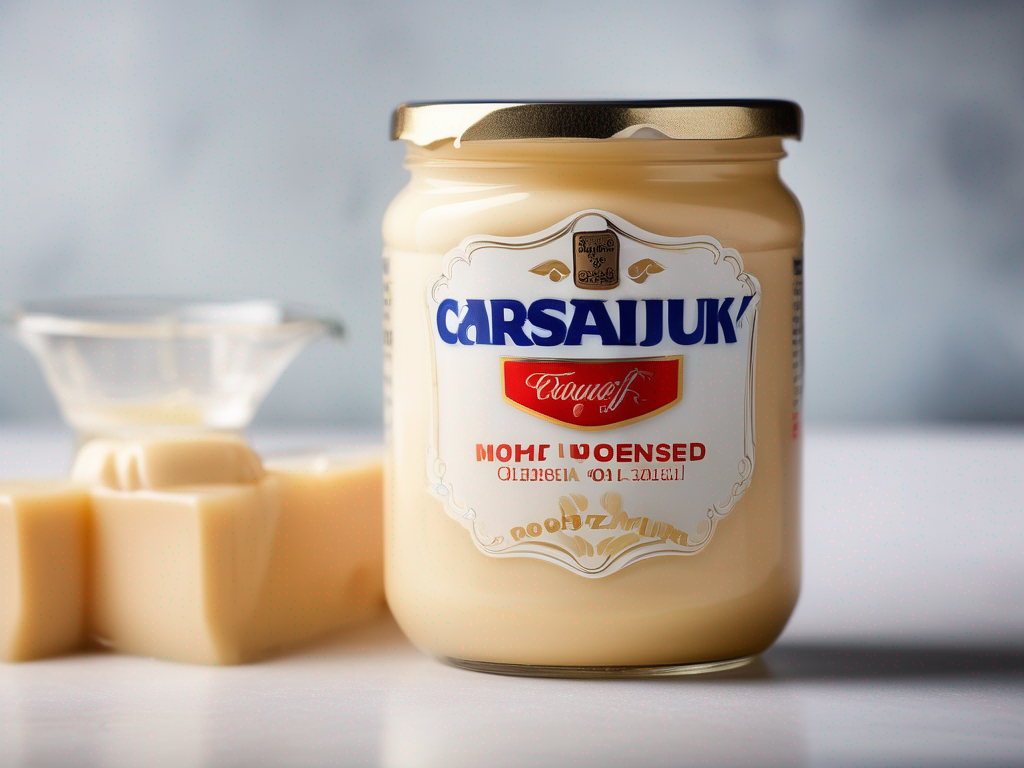
How to Prevent Mold in Leftover Condensed Milk
Get Your Free Food Safety Cheat Sheet
30 most common foods with instant answers. Print it and stick it on your fridge—completely free!
How to Prevent Mold in Leftover Condensed Milk
Condensed milk is a versatile ingredient that adds sweetness and creaminess to various dishes and beverages. Whether you use it in your morning coffee, dessert recipes, or as a topping for fruits, it's important to store leftover condensed milk properly to prevent mold growth. Mold can pose serious health risks and spoil the taste and quality of the condensed milk. In this blog post, we will discuss effective ways to prevent mold in leftover condensed milk. (Condensed milk)
Understanding Mold Growth in Condensed Milk
Mold is a type of fungus that thrives in moist and warm environments. When condensed milk is exposed to air and not stored correctly, it creates an ideal breeding ground for mold spores. Mold growth in condensed milk can be identified by its fuzzy appearance, musty smell, and discoloration. Consuming moldy condensed milk can lead to food poisoning and other health issues.
Factors that Contribute to Mold Growth in Condensed Milk
Several factors can contribute to mold growth in leftover condensed milk, including:
- Improper Storage: Storing condensed milk in warm and humid environments can promote mold growth.
- Contaminated Utensils: Using dirty utensils to scoop out condensed milk can introduce mold spores.
- Extended Exposure to Air: Leaving the condensed milk container open for extended periods can allow mold spores to settle on the surface.
- Expired Product: Using expired condensed milk increases the risk of mold contamination.
Tips to Prevent Mold in Leftover Condensed Milk
To ensure the safety and quality of your leftover condensed milk, follow these tips to prevent mold growth:
1. Store in Airtight Containers
Transfer leftover condensed milk into clean, airtight containers to minimize exposure to air and moisture. Make sure the containers are specifically designed for food storage and have tight-fitting lids to seal in freshness.
2. Refrigerate Promptly
After opening a can of condensed milk, refrigerate any unused portion promptly. Store the container in the coldest part of the refrigerator, away from odorous foods that can affect the flavor of the condensed milk.
3. Use Clean Utensils
When scooping out condensed milk from the container, use clean and dry utensils to prevent contamination. Wash utensils with hot, soapy water before each use to eliminate any mold spores or bacteria.
4. Check Expiry Dates
Always check the expiration date on the condensed milk packaging before use. Using expired products increases the risk of mold growth and spoilage. Discard any condensed milk past its expiration date.
5. Monitor Consistency and Smell
Before using leftover condensed milk, inspect its consistency and smell. If you notice any changes in texture, color, or odor, discard the condensed milk immediately as these may indicate mold contamination.
Conclusion
By following these simple yet effective tips, you can prevent mold growth in leftover condensed milk and enjoy its creamy goodness without any worries. Proper storage, timely refrigeration, and regular inspection are key to maintaining the safety and quality of condensed milk. Remember, when in doubt, it's always safer to discard the product than risk consuming mold-contaminated condensed milk. Stay vigilant, stay safe, and savor every spoonful of your favorite condensed milk treats!
For more information on condensed milk, visit our [condensed milk](/food/condensed milk) page. (Condensed milk)
Related Posts
Here are some other articles you might find helpful:
Authoritative Food Safety References
These agencies and university labs inform every tip and health precaution we publish.
USDA FoodKeeper – Cold Storage Guidelines
Official refrigerator, freezer, and pantry timelines maintained by the U.S. Department of Agriculture.
Visit USDA FoodKeeperFDA Produce Safety Rule & Grower Guidance
Field-to-fridge handling practices that prevent contamination of fruits, vegetables, and leafy greens.
Visit FDA Produce SafetyCDC Foodborne Illness Prevention Hub
Surveillance-backed guidance on pathogens, symptoms, and steps to reduce foodborne illness risk.
Visit CDC Food SafetyUC Davis Postharvest Technology Center
University research detailing optimal storage atmospheres for produce after harvest.
Visit UC Davis PostharvestPenn State Extension – Home Food Preservation & Safety
Peer-reviewed extension bulletins on safe canning, chilling, and reheating practices.
Visit Penn State ExtensionGet Your Free Food Safety Cheat Sheet
30 most common foods with instant answers. Print it and stick it on your fridge—completely free! Want more? Upgrade to the complete guide with 70+ foods.
Scan your food directly and get instant safety info using our AI-powered camera feature.